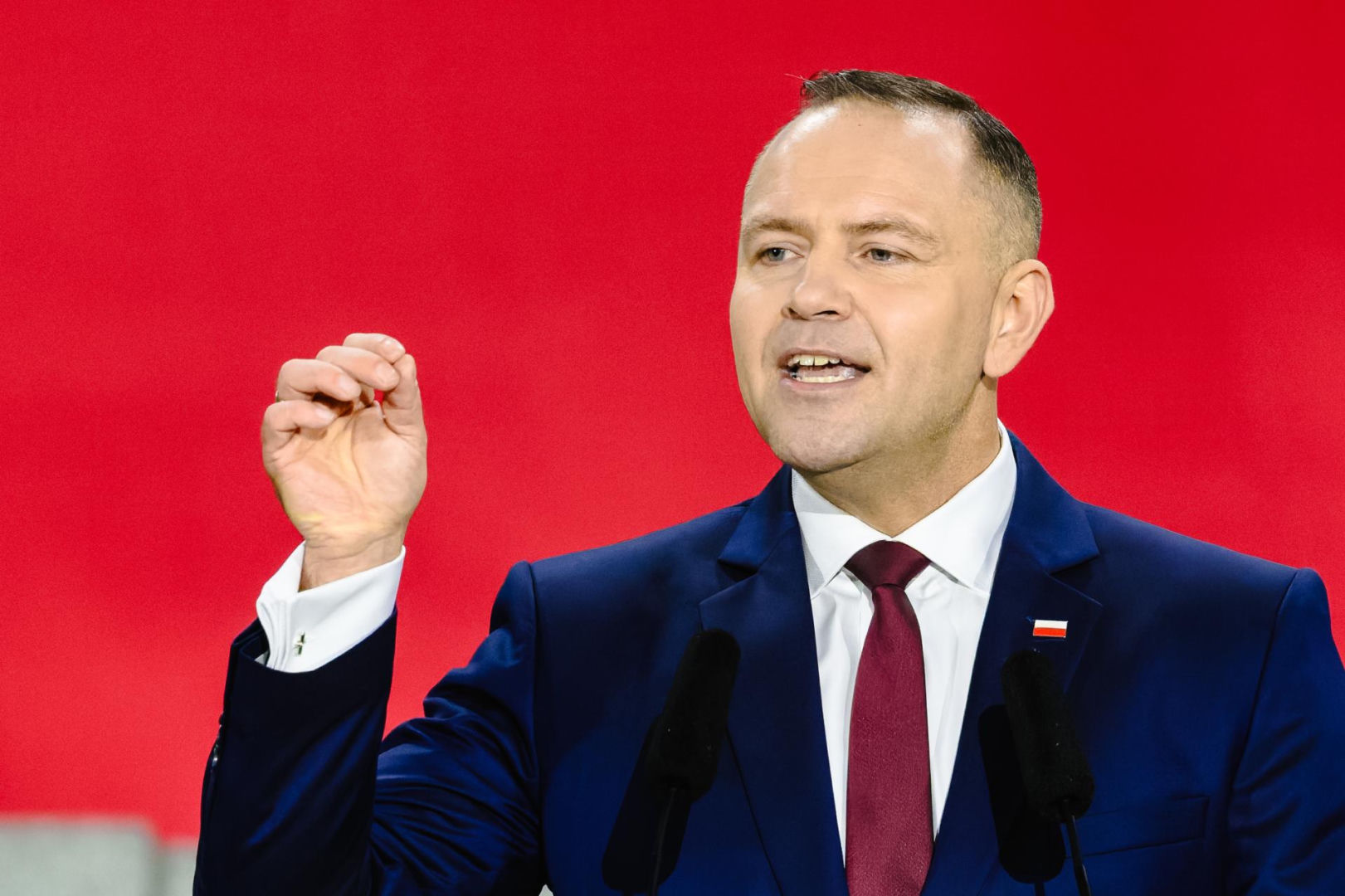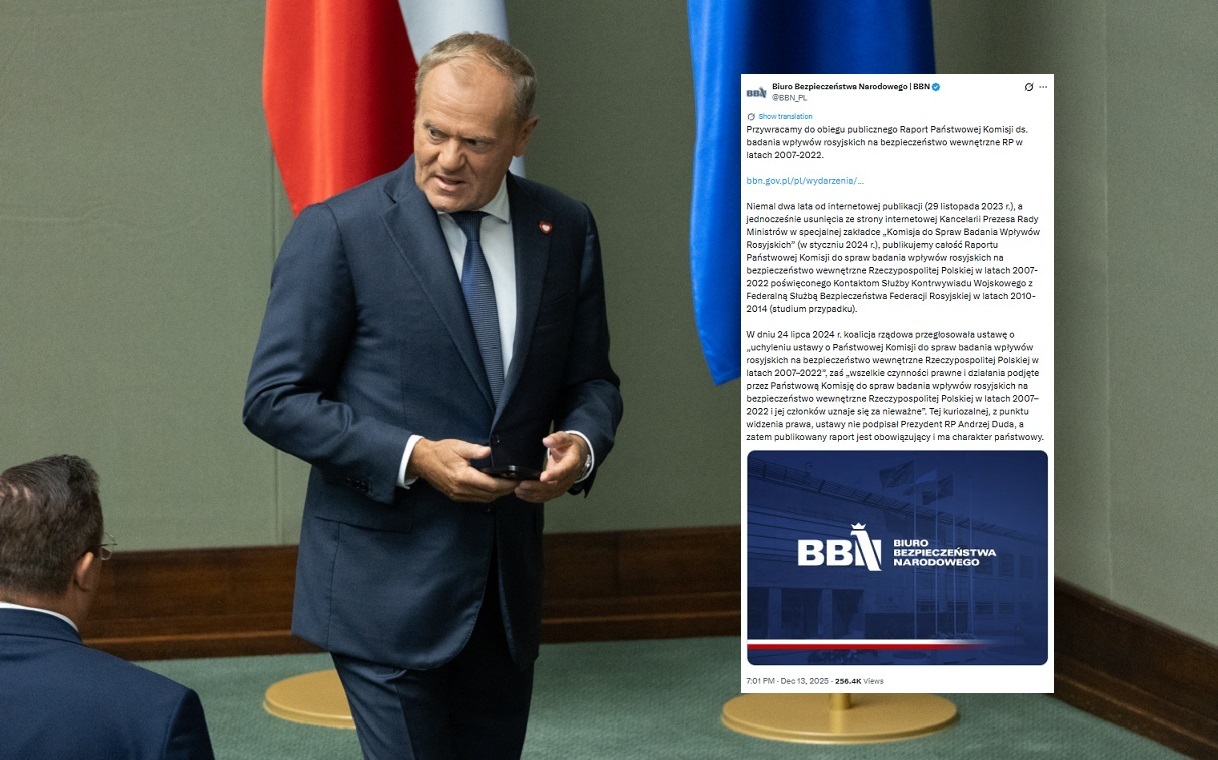Bank of America Misses On Revenue Despite Stellar Sales And Trading Results, Projects Two Rates Cuts In NII Forecast
The strong bank earnings continued for a second day, when after solid results from JPM yesterday (if rather mediocre from Wells) this morning we got top and bottom line beats from Goldman, Morgan Stanley and Bank of America. Taking a closer look at the latter, the bank’s traders posted a record second quarter – yet one which missed revenue estimates – as the company reaped the benefits of volatile markets and net interest income topped analysts’ estimates.
While BofA reported an EPS beat (Q2 came at $0.89, vs est of $0.85), total Q2 revenue of $26.5 billion was down 3% YoY from $27.4 billion a year ago, and missed estimates of $26.75 billion. Overall, Bank of America’s second-quarter profit rose, with net income up 3.2% to $7.12 billion, more than the $6.56 billion analysts had predicted.
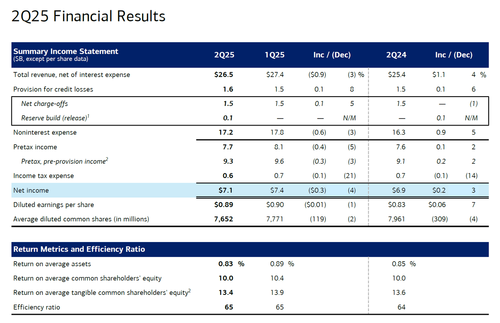
Still, revenue from fixed income, currencies and commodities trading jumped 19% to $3.25 billion „driven by strong performance in macro products”, which helped Bank of America top analysts’ estimates for per-share earnings. Equity trading rose 9.6% to $2.13 billion, also topping expectations,” driven by improved trading
performance and increased client activity.”
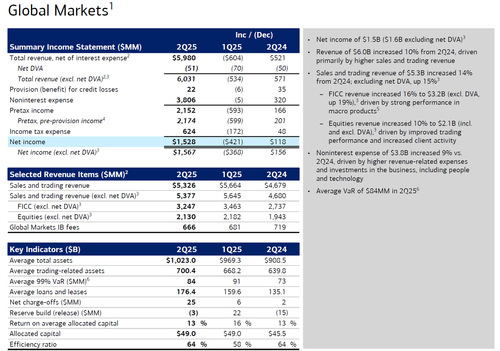
Unlike JPM, where the provision for credit losses unexpectedly tumbled, Bank of America saw its loss provisions rise to $1.6 billion from $1.5 billion a year ago, and in Q1 2025. The net reserve build was $67MM in 2Q25 vs.$28MM in 1Q25. Some more details:
- Total net charge-offs of $1.5B increased $73MM from 1Q25
- Consumer net charge-offs of $1.1B decreased $60MM, driven by lower credit card losses: Credit card loss rate of 3.82% in 2Q25 vs. 4.05% in 1Q25
- Commercial net charge-offs of $466MM increased $133MM driven primarily by sales and resolutions of commercial real estate office properties
- Net charge-off ratio of 0.55% vs. 0.54% in 1Q25
- Allowance for loan and lease losses of $13.3B represented 1.17% of total loans and leases
- Total allowance of $14.4B included $1.1B for unfunded commitments
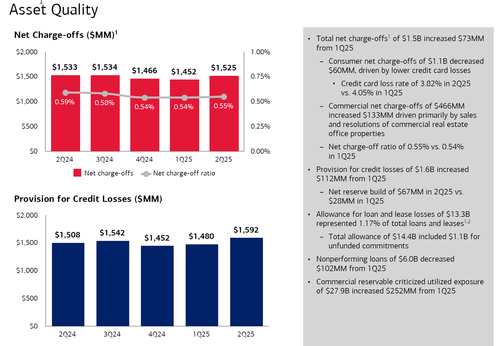
Taking a closer look at the balance sheet, both total deposits and loans increased across the franchise:
- Average deposits of $1.97T increased $64B, or 3%
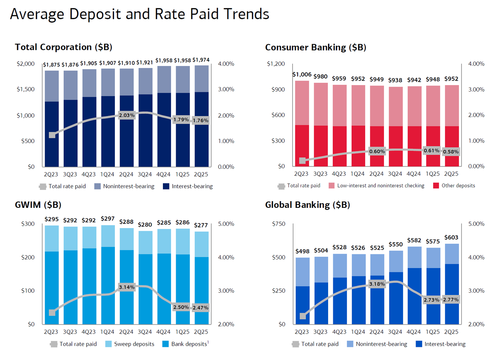
- Average loans and leases of $1.13T increased $77B, or 7%
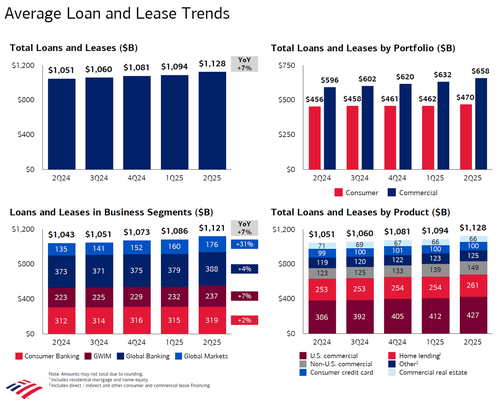
- Average Global Liquidity Sources of $938B
- CET1 capital of $201B was flat to 1Q25
- CET1 ratio of 11.5%4 vs. 11.8% in 1Q25; well above regulatory minimum
- Paid $2.0B in common dividends and announced plans to increase quarterly common dividend 8%5
- Repurchased $5.3B of common stock
Here is Goldman’s recap of the earnings:
- Earnings beat – BAC reported 2Q25 EPS of 89¢, vs. GSe/Visible Alpha Consensus Data 89¢/85¢, with core EPS of 89¢ vs. our/Street like estimates of 91¢/90¢ (backing out $51mn losses on CVA/DVA, a $67mn reserve build, and normalizing the tax rate); with NII-FTE coming in at $14.815, above ‘buyside expects’ of ~$14.7-14.8bn while both expenses and fees were in-line. Both loans and deposits looked better than expectations (there were some worries on deposits) while the buyback also came in a touch above at ~$5.3bn. Within the in-line print in fees, BAC beat in both Trading and IB while the negative offset was ‘other income’
- Key takeaway: We view these results as better than feared, given a core PPNR of $9.5bn roughly in line with the Street, on better core fees, slightly lower NII, and roughly in-line core operating efficiency, with a core ROTCE of 13.3% 20bps below the Street. We expect the focus to be on the cadence of NII and rate sensitivity, and the expense guidance into 2025, although the company held the 4Q25 NII guide unchanged, which we think will be key to the share price performance today, given the weaker NII print for the quarter, vs. consensus. The pick up in NII growth in the second half is driven by a step change in asset repricing (from around $100m in Q2 to $225m per quarter in 3Q/4Q25), and that the guidance still assumes two rate cuts.
- Summary of key quarterly trends: NII was ~0.5% below the Street, on higher loans, earning assets, and deposit balances, and a lower NIM (mainly driven by lower loan and security yields, partially offset by better deposit repricing). Core fee revenue came in ~0.5% above like consensus, on better trading and investment banking revenue, in particular, although core fees are above as well. We peg the core efficiency ratio at 64.5%, 10bps worse vs. the Street. Provisions were 2% below Street estimates, and BAC built $67mn of reserves (largely in line with GSe for a $59mn build).
- Summary of guidance and vs. expectations: Management held the 4Q25 NII guide unchanged at $15.5-15.7bn (vs. Street at $15.6bn), despite 2 fewer rate cuts in their current forecast, although the company upped commentary from low to mid single digit loan growth through the balance of the year. The company also committed to delivering operating leverage in 2H25.
- We look for further clarity on: 1) the contributors to the unchanged 2025 NII outlook, given 2 less rate cuts, but healthy balance sheet growth trends in the quarter, and the company upping guidance from low to mid single digit loan growth; 2) capital returns, given $5.3bn of share repurchases in the quarter (vs. GSe for $5.4bn), and recently freed up additional excess capital from the most recent CCAR test, and the SLR proposal; 3) sustainability of trading revenue, after 2Q25 trading was up 15% YoY (vs. intraquarter guidance for up mid-single digit to high single-digit YoY), and additional excess capital that could be deployed into the business. Separately, the pace of improvement of investment banking, which was down 7% YoY (vs. an implied intraquarter guidance of 23% decline YoY); 4) the efficiency outlook for 2025, after core expenses rose 5% YoY in 2Q25; and 5) the pace and magnitude of credit normalization and reserve builds, given macro and geopolitical uncertainty.
Banks benefited from the market volatility which whipsawed global markets after Trump announced tariffs on trading partners around the world in April. Indeed, what was bad news for markets (at least initially) was great news for businesses at Bank of America and its rivals across Wall Street as they’ve benefited from a surge in client activity while also thwarting expectations for a strong rebound in mergers and acquisitions.
The second-largest US bank also said that net interest income, a key source of revenue for the company, rose 7.1% to $14.7 billion, above the 6.5% analyst estimate for NII, the revenue collected from loan payments minus what depositors are paid. Commenting on the results, BofA said that NII increased $0.2B from 1Q25, „driven by higher deposit and loan balances, one additional day of interest accrual, and fixed-rate asset repricing, partially offset by the impact of lower non-U.S. interest rates on loan yields.” The Q2 NII also „increased $1.0B from 2Q24, driven by fixed-rate asset repricing, higher NII related to Global Markets (GM) activity, and higher deposit and loan balances, partially offset by the impact of lower interest rates.”
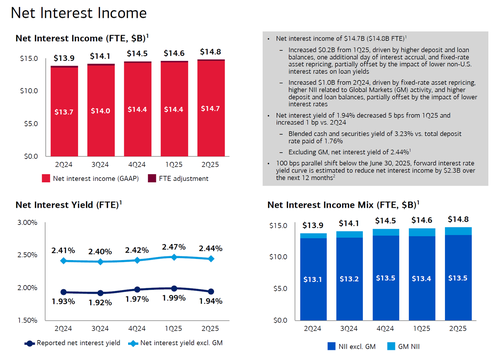
Similar to JPMorgan, BofA’s outlook is for continued growth in NII (to $15.6BN), where fixed-rate asset repricing adds $450MM by year end, offsetting the $250MM in expected rate cuts in Sept and Oct.
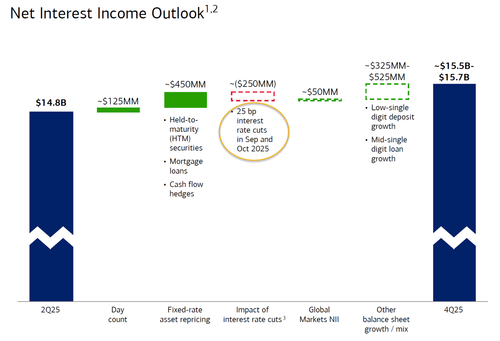
“Consumers remained resilient, with healthy spending and asset quality, and commercial borrower utilization rates rose,” Chief Executive Officer Brian Moynihan said in the statement. “In addition, we saw good momentum in our markets businesses.”
As Bloomberg notes, Bank of America’s results offered a further look at how the biggest US banks fared at the beginning of Trump’s second term. Investors are also eager to hear details on the national economy from executives whose firms cater to large swaths of American consumers and businesses.
On Tuesday, JPMorgan and Citigroup reported earnings that beat analysts’ estimates, with trading and investment-banking activity boosting results. Executives at both banks expect the momentum in trading to continue and the investment-banking pipeline to build as corporate clients get more comfortable with geopolitical tensions.
Shares of Charlotte, North Carolina-based Bank of America rose 1.8% at 6:59 a.m. in early New York trading. They gained 4.6% in the 12 months through Tuesday, less than the 19% increase in the S&P 500 Financials Index.
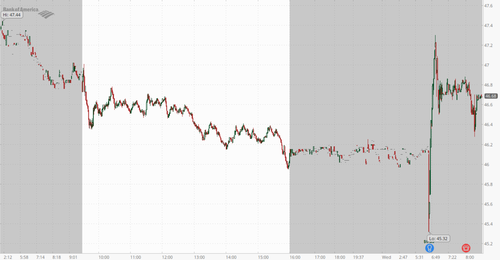
Much more in the full Bank of America earnings presentation below (pdf link).
Tyler Durden
Wed, 07/16/2025 – 08:42

 4 miesięcy temu
4 miesięcy temu


